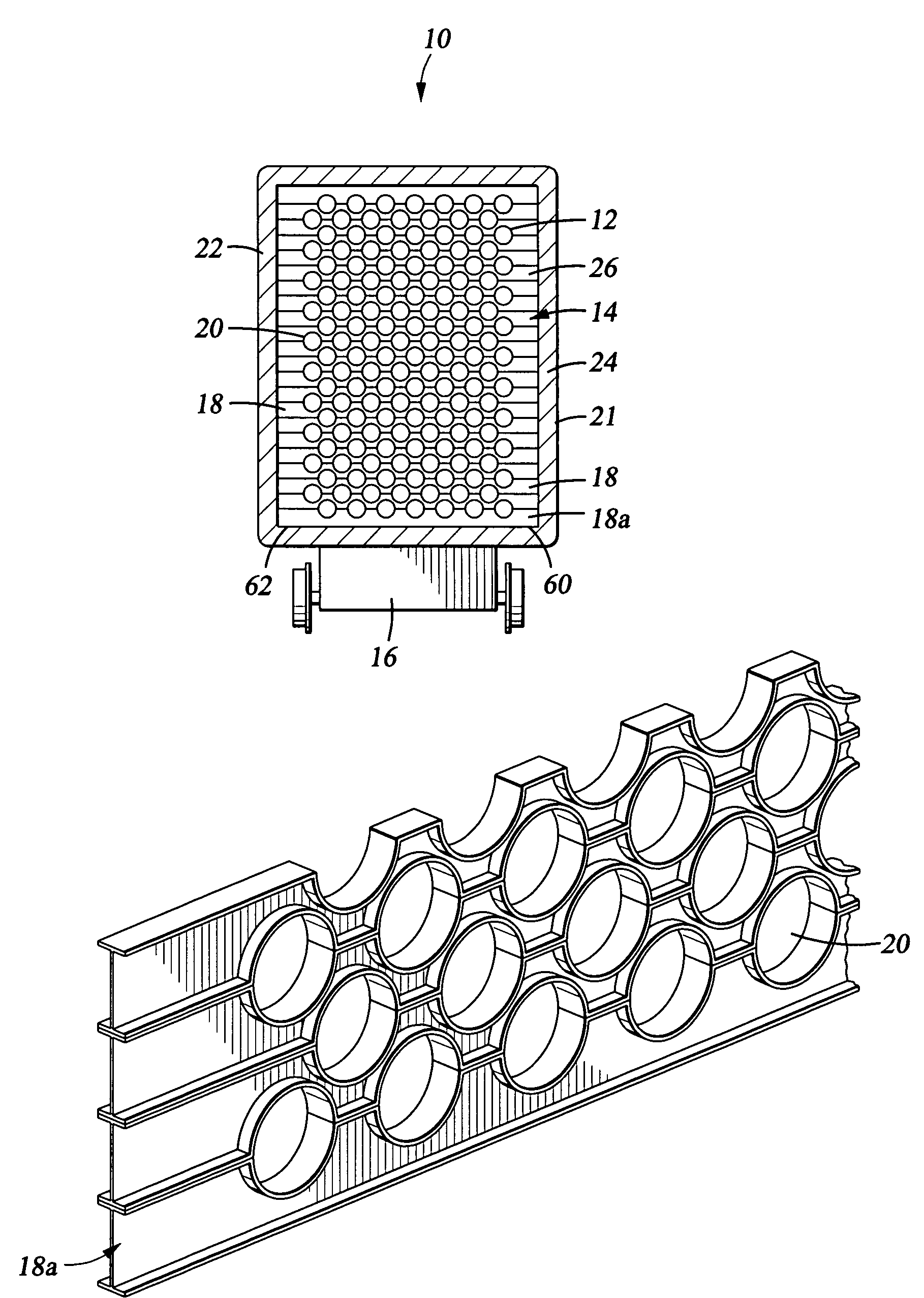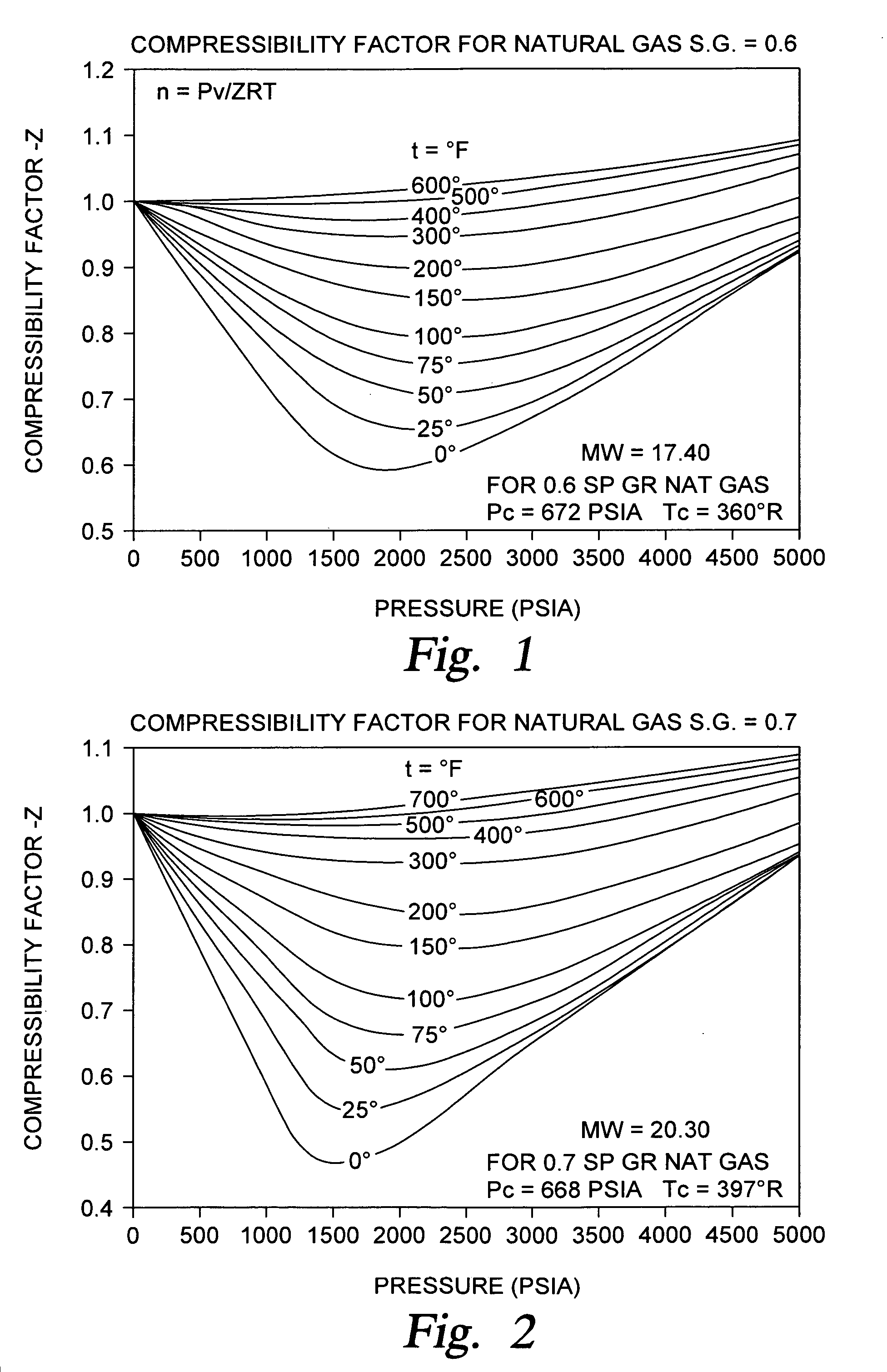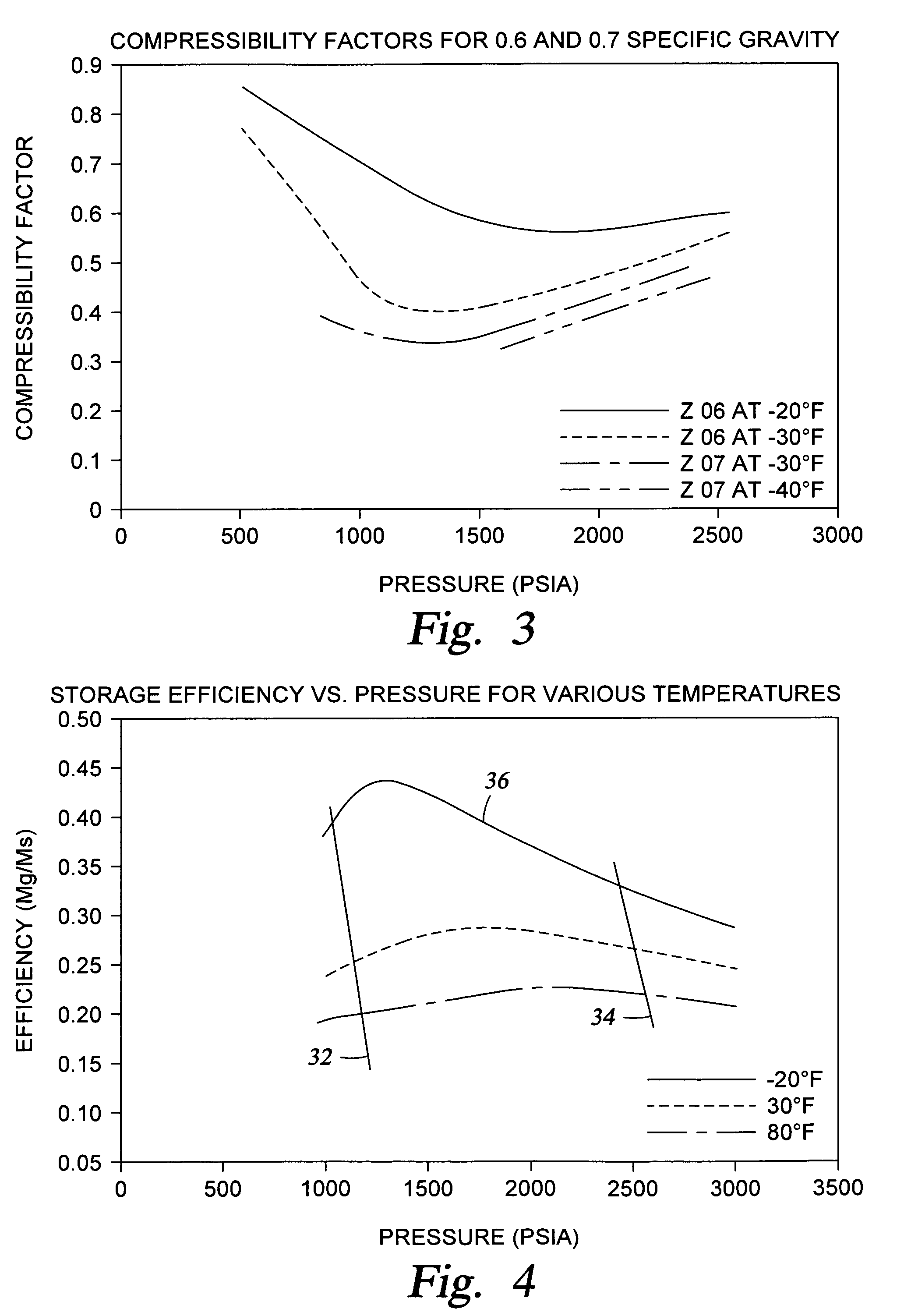Modular system for storing gas cylinders
a module system and gas cylinder technology, applied in the direction of transportation items, non-pressure vessels, liquefaction, etc., can solve the problems of large space occupation of small amount of gas, high capital cost, and inability to store material at that volume. , to achieve the effect of increasing the size of the present invention and high capital cos
- Summary
- Abstract
- Description
- Claims
- Application Information
AI Technical Summary
Benefits of technology
Problems solved by technology
Method used
Image
Examples
Embodiment Construction
[0075]In the description which follows, like parts are marked throughout the specification and drawings with the same reference numerals, respectively. The drawing figures are not necessarily to scale. Certain features of the preferred embodiments may be shown in exaggerated scale or in somewhat schematic form and some details of conventional elements may not be shown in the interest of clarity and conciseness. It is understood that the systems disclosed in this application are intended to be designed in accordance with applicable design standards for the uses intended, as published by recognized regulatory agencies, such as the American Petroleum Institute (API), American Society of Mechanical Engineering (ASME), and the Department of Transportation.
[0076]The present invention is directed to several areas including but not limited to methods and apparatus for gas storage and transportation; methods of construction for the storage apparatus; methods and apparatus for on-loading and ...
PUM
| Property | Measurement | Unit |
|---|---|---|
| temperatures | aaaaa | aaaaa |
| storage temperature | aaaaa | aaaaa |
| pressure | aaaaa | aaaaa |
Abstract
Description
Claims
Application Information
 Login to View More
Login to View More - R&D
- Intellectual Property
- Life Sciences
- Materials
- Tech Scout
- Unparalleled Data Quality
- Higher Quality Content
- 60% Fewer Hallucinations
Browse by: Latest US Patents, China's latest patents, Technical Efficacy Thesaurus, Application Domain, Technology Topic, Popular Technical Reports.
© 2025 PatSnap. All rights reserved.Legal|Privacy policy|Modern Slavery Act Transparency Statement|Sitemap|About US| Contact US: help@patsnap.com



